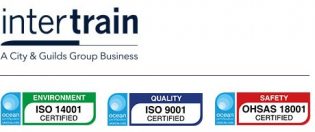Customer needs and expectations are constantly evolving, and organisations must be able to adapt and innovate if they are to remain competitive.
Innovation prevents stagnation, but it’s also the key to growth. Innovation helps you solve problems and develop new products, services, or processes. It helps you take advantage of new technologies, to stay ahead of your competitors, and to meet the needs of your customers and employees.
However, innovation requires change and leading change can be challenging even for the most experienced managers. It can be even tougher for first-time change leaders or those managing new teams.
Every organisation is different. Every team is different. Every change is different. It’s impossible to plan for every eventuality, and if you don’t have the support of your stakeholders and employees, your change is at risk of failing.
Understanding change management approaches, being able to manage resistance, and cultivating a culture of innovation and continuous improvement will increase the chances of success.
Understanding change management
Change can occur for different reasons. Sometimes change is standard and straightforward, sometimes it is more complex. Sometimes it is required for growth, sometimes it’s in response to an emergency (for example, a global pandemic).
You can’t always plan for change, but where you can, taking a structured approach will improve the chances of success.
Assess: Understand the purpose of the change. Why is the change necessary? What are the objectives? How will it impact customers, employees and stakeholders? How will it affect other areas of the business?
Prepare: Do your research and consider all the options before you map out your change journey. Apply critical thinking and invite relevant stakeholders to provide insight and ideas. Complete a cost-benefit analysis (where appropriate).
Plan: Create a plan. What actions are required, who will be responsible for taking them, and when will these things happen? Complete a SWOT analysis – how can you capitalise on the opportunities and minimise the threats? Start communicating the change to the relevant people.
Implement: Put the plan into practice, reviewing and revising as you go. Evaluate each stage – has it gone to plan or are adjustments required? Keep communication lines open – invite feedback and encourage people to share any concerns.
Sustain: Your change journey doesn’t end once the change has been implemented – you need to embed the change. Encourage employees or customers to provide feedback and share any potential issues. Measure the success of your change and continue to look for improvement opportunities.
Overcoming resistance to change
Resistance to change is a common obstacle and will usually stem from fear of the unknown, concerns about job security, or simply a reluctance to depart from familiar routines.
Effective leaders recognise this resistance and employ strategies to mitigate it. John Kotter and Leonard Schlesinger identified six strategies to address resistance:
Education and communication: The most common way to minimise resistance is to communicate and educate people in advance of the change (and throughout). Smaller changes can be communicated through written materials (emails, memos, reports etc.). However, it is often more effective to communicate bigger changes through face-to-face interactions (one-to-one discussions or group meetings). Educating your employees in advance helps them prepare for the change.
Participation and involvement: Involving employees in the change can be hugely beneficial. If they have been involved in coming up with ideas, planning the change, or implementing various aspects of it, they are more likely to feel invested in making it work. It’s not always possible to involve every employee, but you can create focus groups, use surveys, or encourage suggestions and ideas.
Facilitation and support: Resistance to change is often caused by fear or anxiety around elements of the change. In these situations, providing support, coaching, mentoring, or training can help remove the fear and anxiety so there is less resistance.
Negotiation and agreement: This strategy can be effective when change means individuals or groups of people will lose out (or feel like they are losing out). For example, if you were changing the company bonus scheme. Negotiating terms, offering incentives, or agreeing to certain compromises can reduce resistance and animosity.
Manipulation and co-optation: This can be a tricky strategy, but if change is imperative and time is short, it can be useful. Manipulating the information you share, when you share it, and the way you position it can help ease the transition. Co-opting involves giving individuals or groups desirable roles in the design or implementation of the change.
Explicit and implicit coercion: Not all changes will be popular, no matter how essential they are. When a speedy change is crucial, sometimes coercion is the only option. People don’t always respond well to forced change, so this strategy can cause resentment if not handled correctly.
Choosing the right strategy will depend on the nature of your change. Whichever strategy is employed, having good communication skills will increase the chances of successful implementation.
Cultivate a culture of innovation and continuous improvement
Change is inevitable. The old adage of “if it ain’t broke, don’t fix it” does not apply to businesses that want to grow and thrive.
Instead, leaders should create a culture of innovation and continuous improvement – an environment where creativity and new ideas are not only encouraged but celebrated.
Leaders can set the tone for this culture by promoting open communication, idea-sharing, risk-taking, and experimentation. They should encourage their teams to challenge the status quo, “think outside the box”, and pursue innovative solutions.
Continuous improvement shouldn’t be the job of one person – every employee should be involved in driving the business forward. What processes could be made more efficient? How can you be better at meeting customer expectations? What can be done to improve employee well-being?
Developing innovative leaders
Continuous improvement does not solely apply to operational processes – it applies to people as well.
We need to invest in the continuous improvement of our employees and ourselves through training and development.
As a manager or leader, there’s always something new to learn or a skill you can improve and develop. Organisations need to support managers and leaders in this development, but you also need to invest in yourself.
Getting formal leadership and management training will not only help you build your leadership skills, it will also help you grow in confidence, and increase your chances of career progression.
Alternative Partnership delivers ILM-accredited Leadership and Management training programmes to support you and your teams in gaining formal, nationally recognised qualifications.
If you’d like to hear more about our current ILM courses or are interested in any of our services, get in touch.












